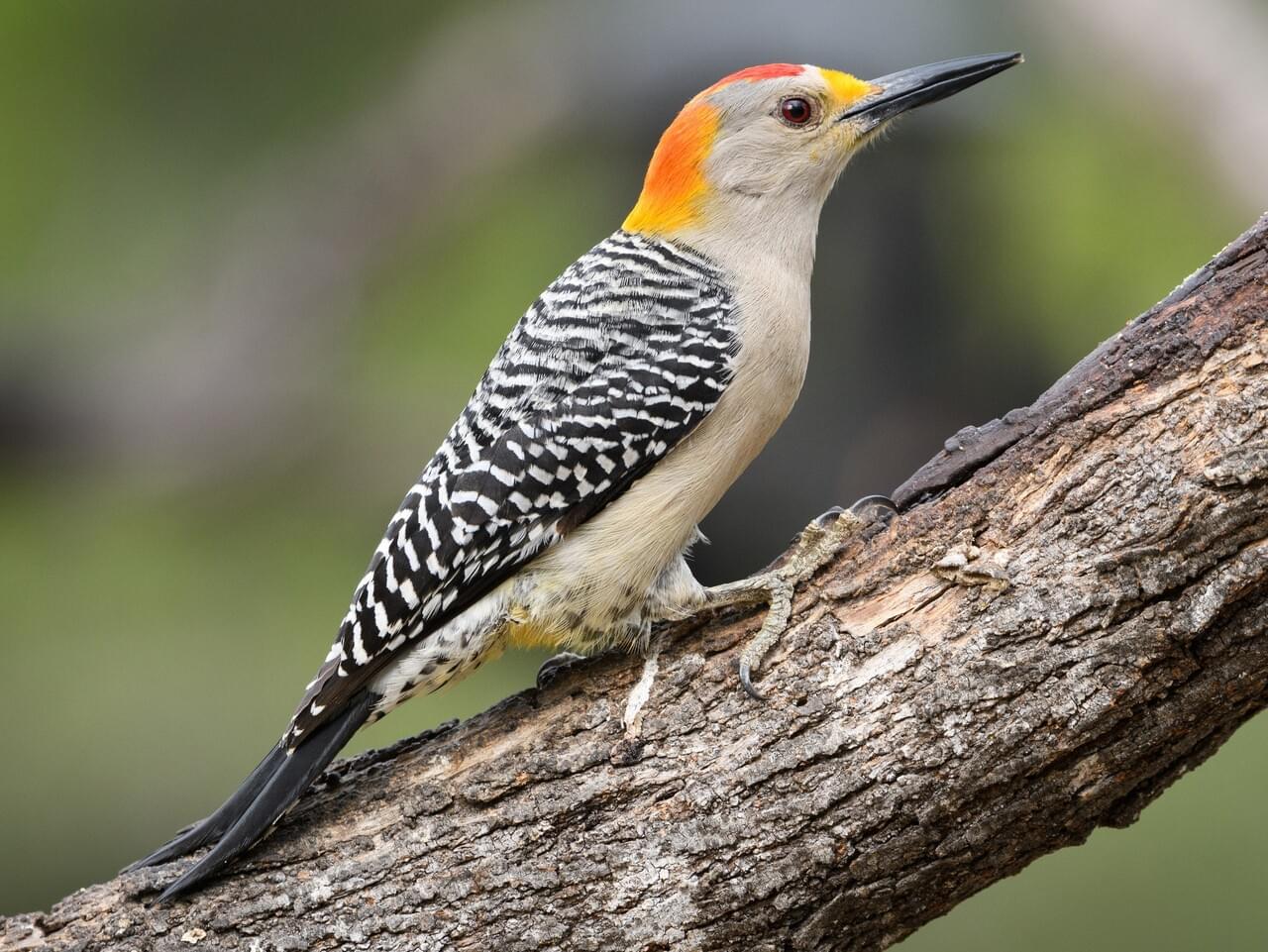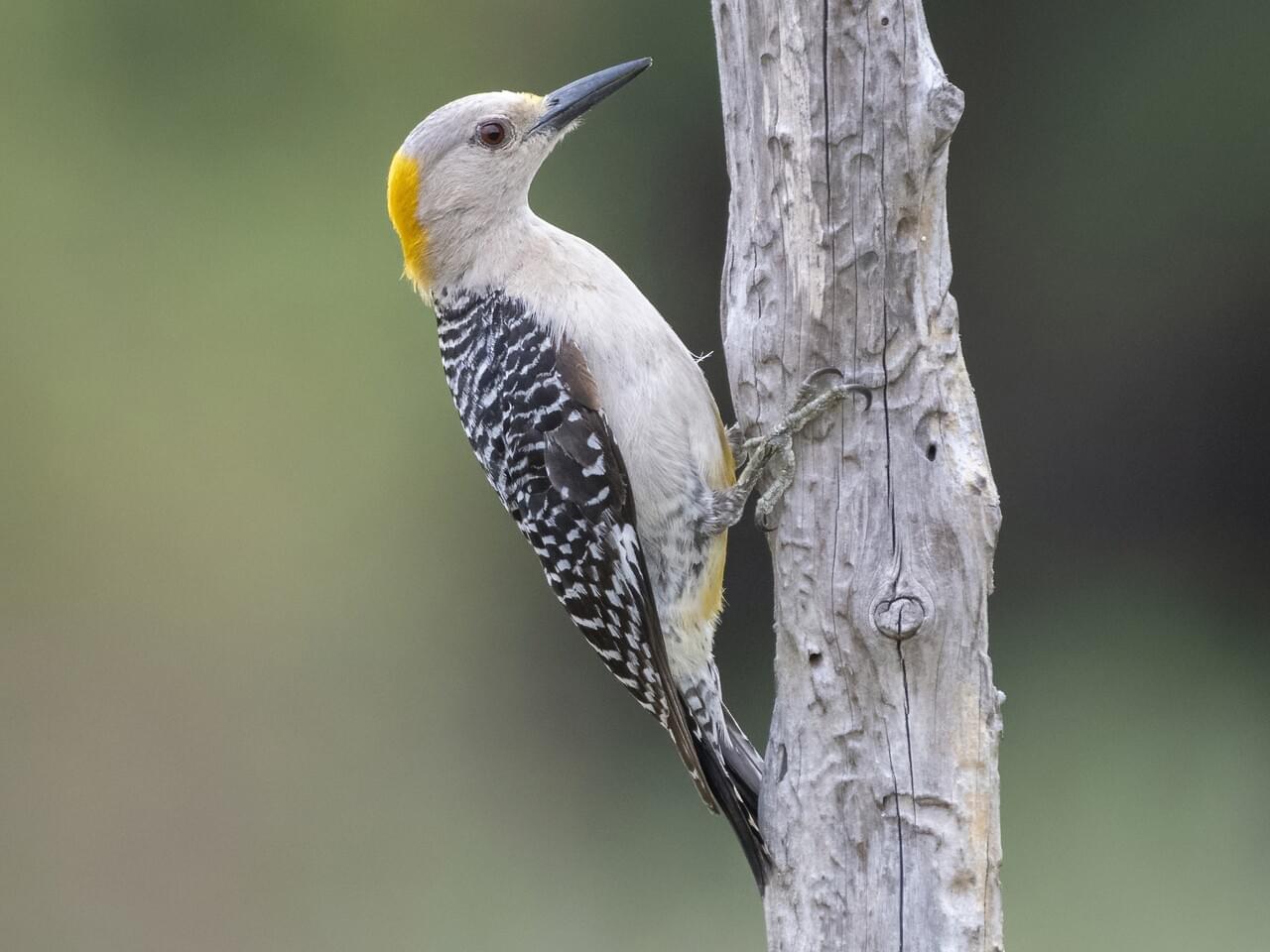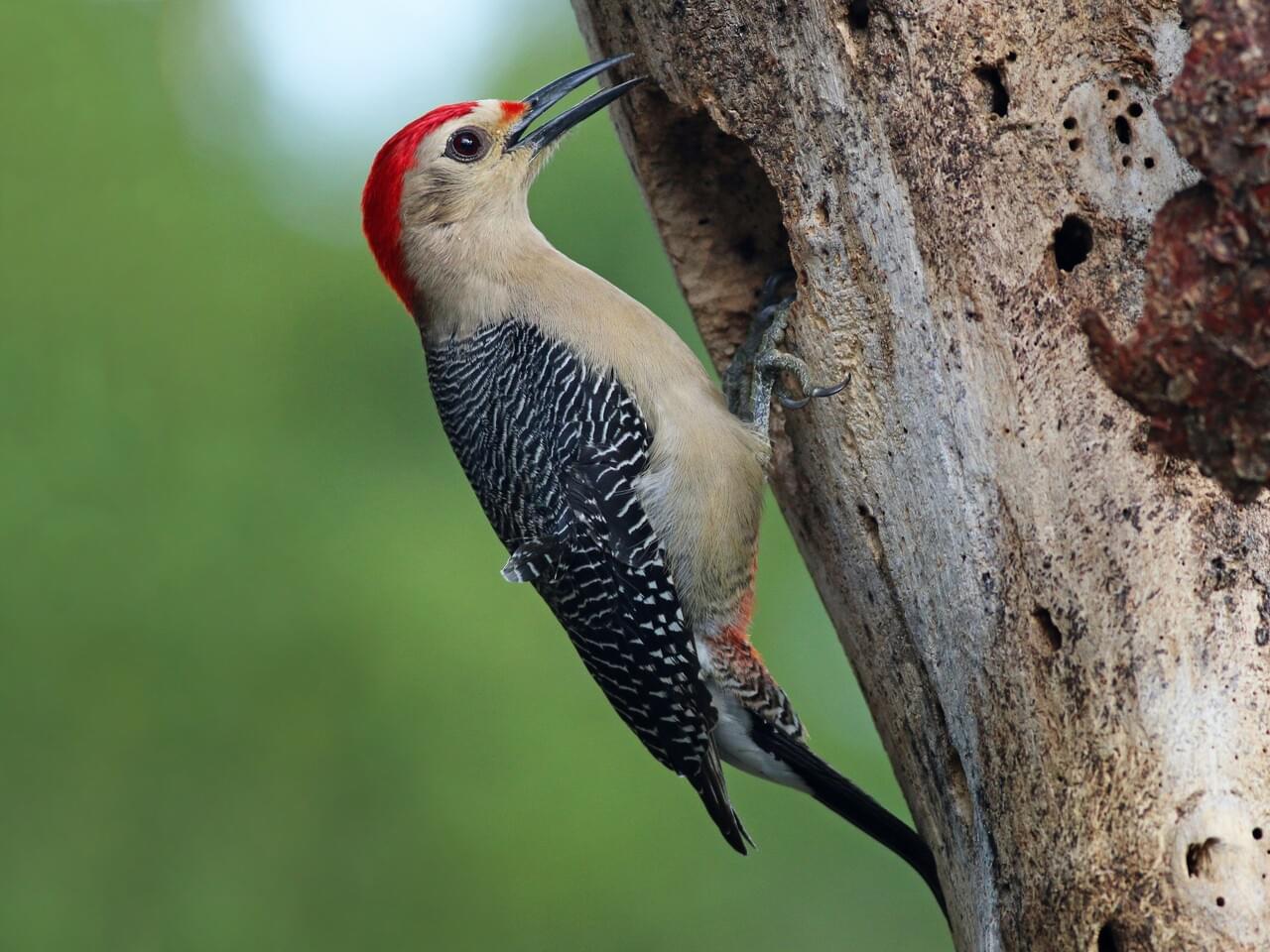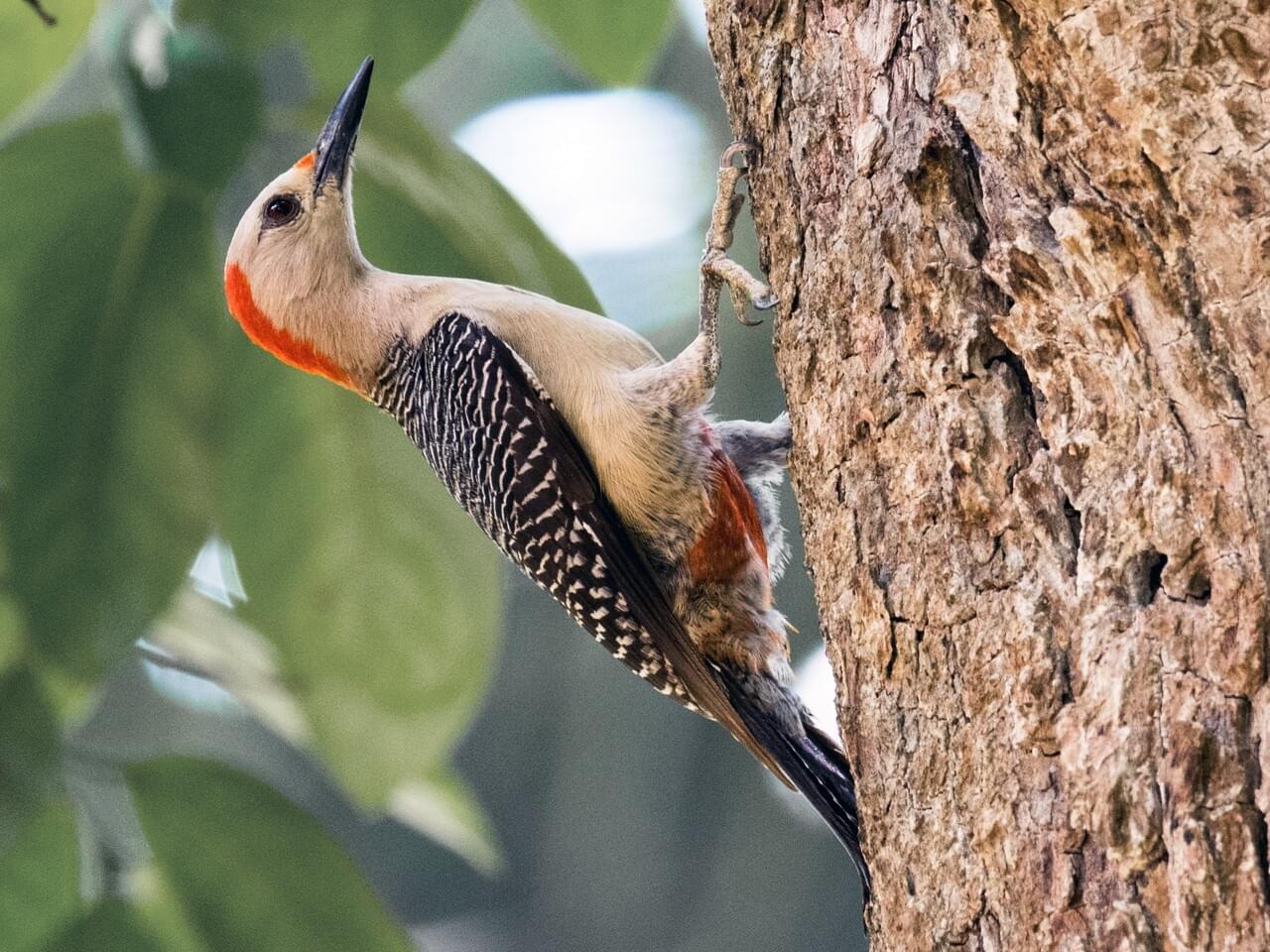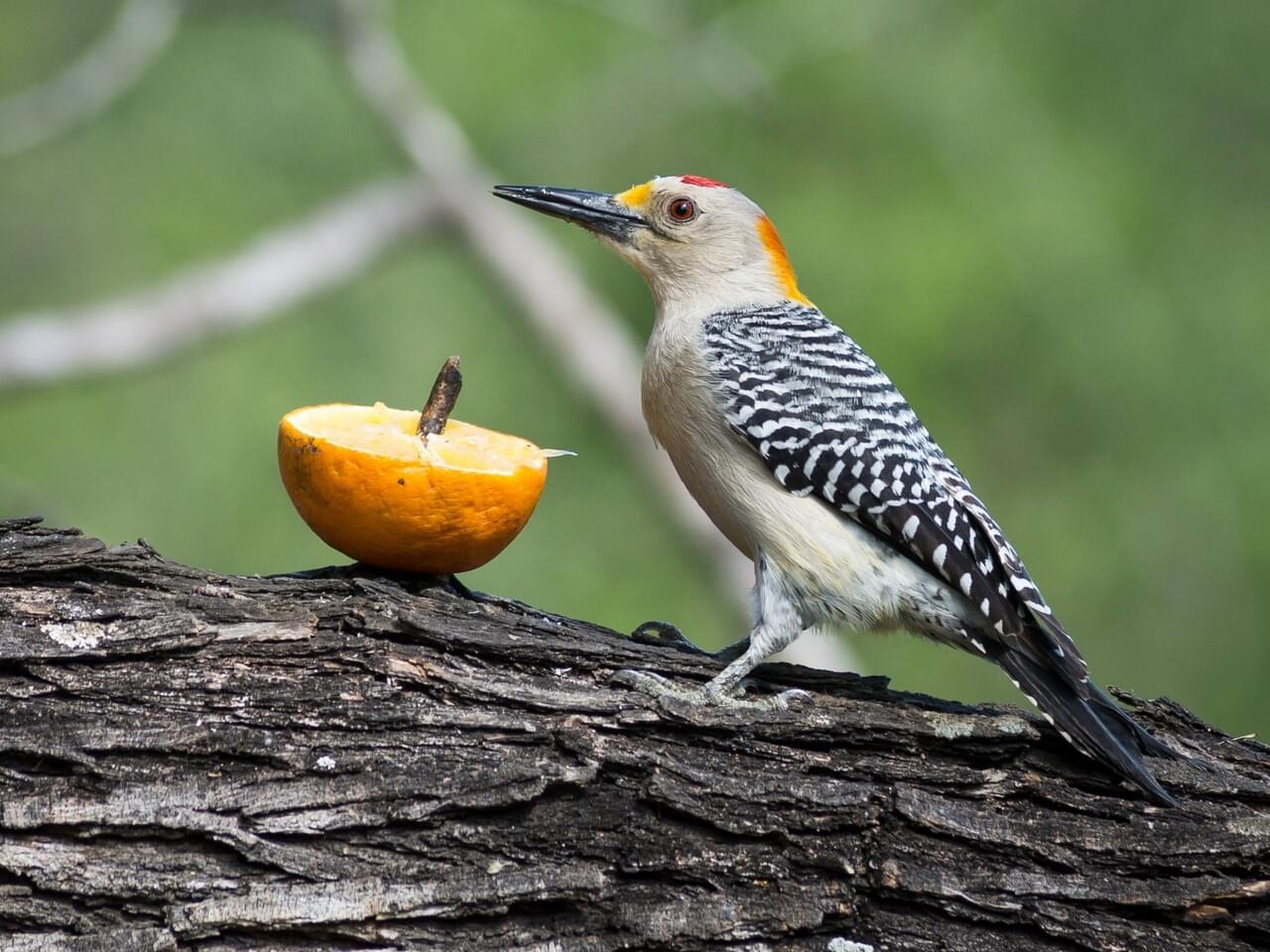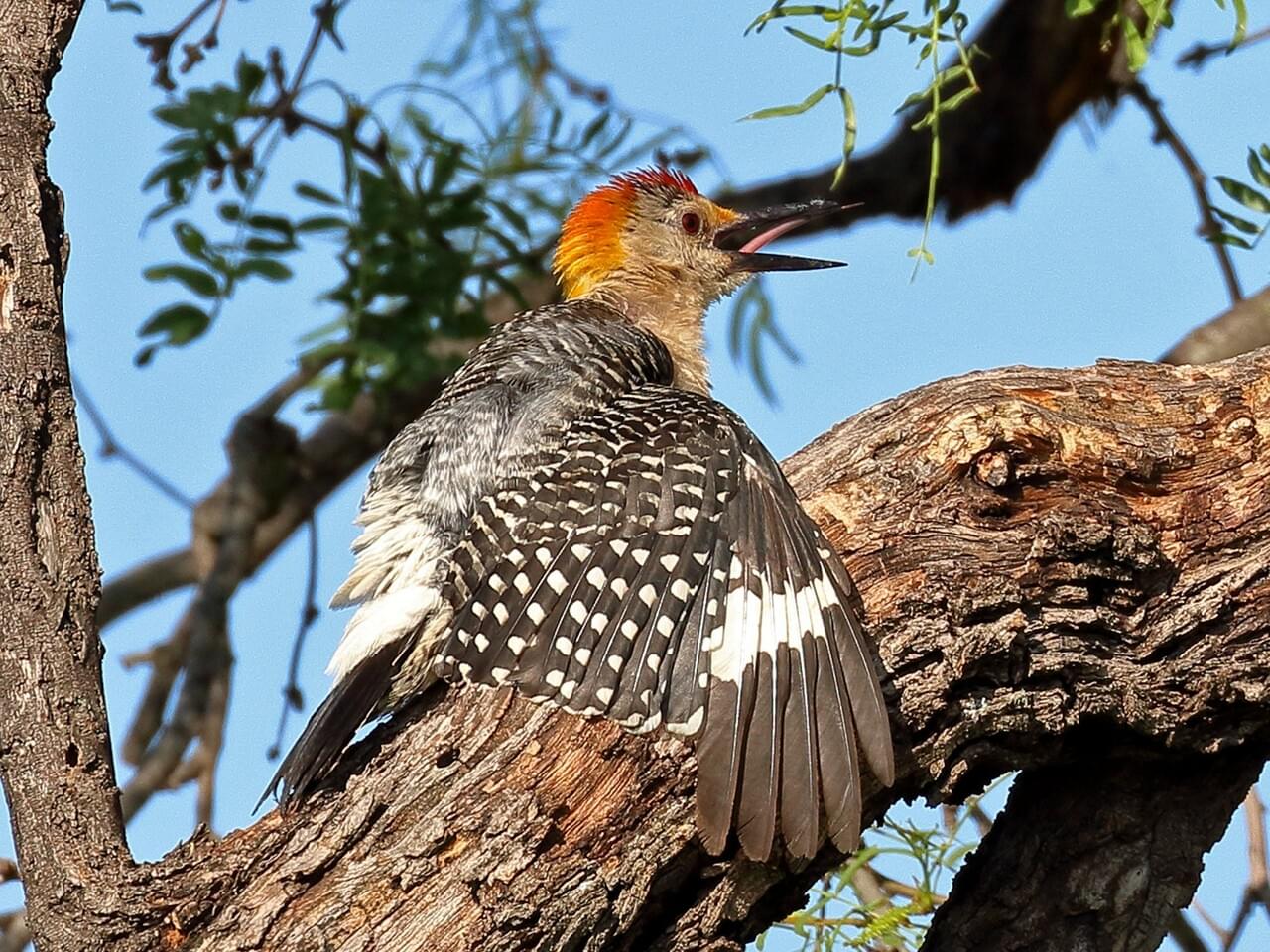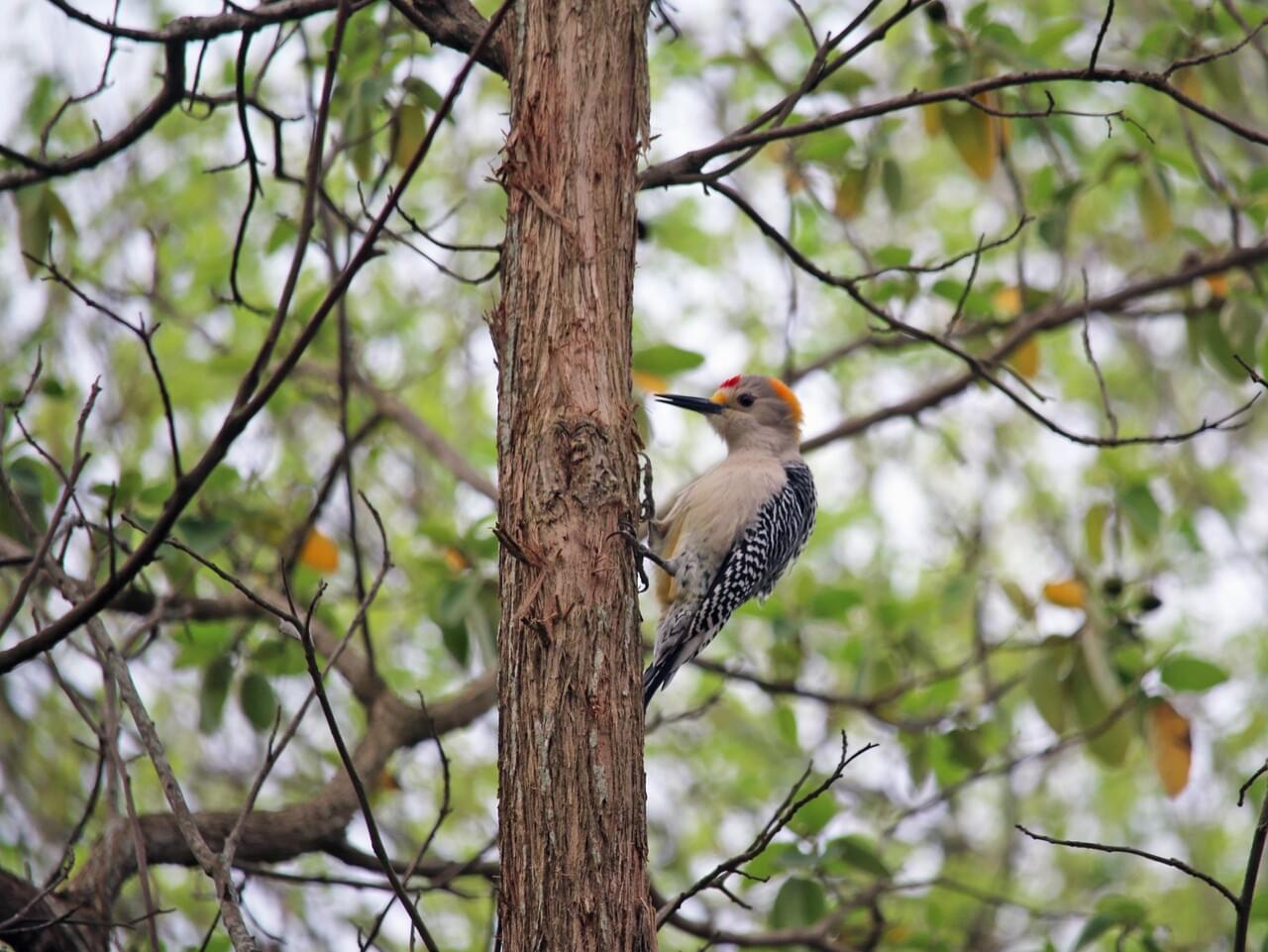 Photo ©
Keith Alderman
Photo ©
Keith Alderman
Golden-fronted Woodpecker
Regional Species
With a rich yellow nape and lower belly, female Golden-fronted Woodpeckers look as if they have been sprinkled with gold. Males top off their plumage with a gold forehead and brilliant red crown. In the U.S, these woodpeckers make their home in the dry brushlands and bosques of Texas and parts of Oklahoma. Like other woodpeckers, Golden-fronteds perch early in the day, often calling loudly or drumming, and then spend their day picking insects and larvae from tree branches and trunks.
Range
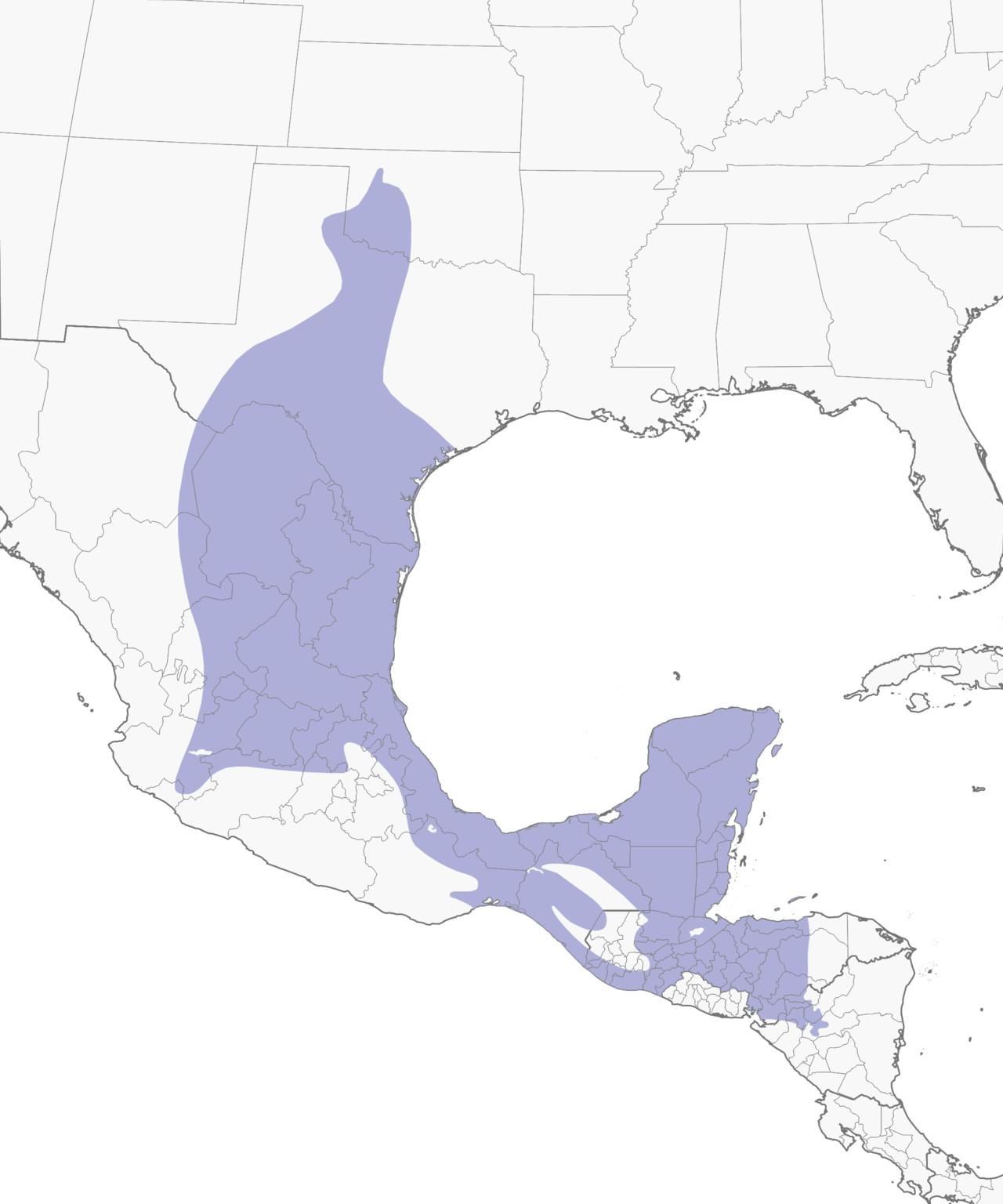
Habitat
Across its large range, Golden-fronted Woodpeckers occupy many kinds of habitats. In the United States they live in dry, semi-open woodlands and brushlands in Texas and southwestern Oklahoma. Their habitats include mesquite bosques, oak-juniper woodlands and savannas, riparian forests with cottonwoods, and urban and suburban parks. In addition, look for them among native plants including pecan, soapberry, willow, hackberry, persimmon, agarita, prickly pear, and tasajillo.
Food
Golden-fronted Woodpeckers are omnivorous, eating insects and larvae, spiders, fruits, and nuts, much like their relatives the Red-bellied and Gila Woodpeckers. They also eat ants, beetles, grasshoppers, cicadas, praying mantises, walking sticks, moths, small lizards, and possibly birds’ eggs. In the tropics, they consume a great variety of small fruits. In Texas, they eat acorns, fruits of prickly pear cactus, sumac, hackberry, soapberry, wolfberry, greenbrier, lotebush, agarita, and persimmon. They forage mostly below 20 feet on larger limbs and trunks, by gleaning (picking insects from vegetation), pecking, and probing, rarely by excavation. They frequently feed on the ground, especially in winter, and occasionally fly out to catch insects. Golden-fronted Woodpeckers regularly visit backyard feeders, where they eat pecans, peanuts, bananas, citrus fruits, sunflower seeds, and corn.
Behavior
Golden-fronted Woodpeckers are socially monogamous and stay together year-round. Pairs begin or renew bonds in early spring, with courtship displays. They lower their heads and raise their crowns or swing their heads and point their bills in synchrony. Similar displays can occur between males disputing territory. Drumming and calling are most frequent in the early part of the nesting season and probably serve to mark territory. Mated pairs also perform ritualized tapping displays, mostly around nest sites. Unlike their closest relatives, both male and female Golden-fronted Woodpeckers defend their territories against either sex, sometimes chasing them by flying to the territory boundary. Where their ranges meet, Golden-fronted and Red-bellied Woodpeckers maintain non-overlapping territories, and hybrids have been recorded. After nesting, most do not maintain territories, but the smaller Red-headed Woodpecker sometimes drives them out of its winter territories.
Nesting
The average cavity measures about 12.5 inches deep, with an entrance hole about 2 inches in diameter. The bottom of the cavity is lined with wood chips.
Appearance
Typical Sound

© Bob McGuire / Macaulay Library
Adult Description
- Medium- to large-sized woodpecker.
- Back barred black-and-white.
- Orange-yellow back of neck.
- White rump.
- Male with red cap.
Immature Description
- Juvenile similar to adult, but duller, with fine streaking on crown and breast, and only faint color on nape and nasal tufts. Eyes brown.
Plumage Photos
Similar Species
- Red-bellied Woodpecker has red nape, crown (in the male), and nasal tufts, and white-barred, not black central tail feathers.
- Gila Woodpecker has a plain gray head and nape, barred central tail feathers, and fine black bars on its rump.
Did you know?!
- The Golden-fronted Woodpecker is composed of four subspecies that differ in size, amount of barring on the tail, and the color of the nape, nasal tufts, and belly. Whereas the nape of the form found in Texas and most of Mexico is yellow to orange, it is red on the Yucatan Peninsula and orange farther south. The four forms were formerly considered different species.
- The Golden-fronted Woodpecker consumes about as much fruit and nuts as it does insects. In summer in Texas, the faces of some woodpeckers become stained purple from eating fruit of the prickly pear cactus.
